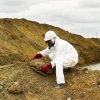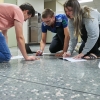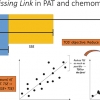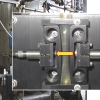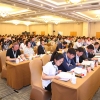Sampling particulate matter is in many fields performed without a scientific basis, mostly because its critical role is ignored, or at best, misunderstood, and because of an unawareness of, sometimes a disregard for, the Theory of Sampling. This two-part column illustrates this important point using experience in the field of geo-environmental engineering.
Sampling Columns
10th World Conference on Sampling and Blending
Correct sampling and analysis of raw materials are essential to ensure well-documented product quality and to contribute to a reduced environmental footprint. To this end, the WCSB10 conference covers the latest research and application experience of the Theory of Sampling and Blending.
31 May–2 June 2022, Kristiansand, Norway
Pages
Previous Sampling Columns have dominantly focused on the technical issues of representative sampling. This column addresses sampling from the complementary point of view: “What is the economic and commercial impact from non-representative sampling on management decisions and in boardrooms?” We have invited two experienced business consultants to help scope out an outline indicating powerful opportunities for added value and for substantial savings.
Kim Esbensen outlines questions you should ask before buying any sampling equipment, and points out areas of responsibility.
Kim Esbensen has, in his Sampling Column, been alerting us all to the dangers of ignoring sampling and explaining how to use the Theory of Sampling (TOS) to ensure correct and representative sampling. In this issue, he, with the help of Paul Bédard from the Université du Québec à Chicoutimi, shows one way in which students can be introduced to the TOS and the problems of ignoring heterogeneity in sampling. Paul Bédard has developed a simple sampling exercise based around floor tiles (see front cover) to provide his geoscience students with practical experience.
The Sampling Column points out that incorrect sampling is irreversible: no amount of chemometrics or further samples will be able to produce a valid model if the sampling is not representative. This applies in flowing PAT analyses as much as in static.
This column shows how well the Theory of Sampling is able to address the powder sampling difficulties that have plagued the pharmaceutical industry for a long time. Definitely, a practical example of the importance of representative sampling.
Here starts a second round of Sampling Columns, which have been a fixture in almost every Spectroscopy Europe issue since its inauguration in 2014. The first series, which concluded in the last issue, provides a stand-alone collection for easy, free access to a first curriculum of the Theory and Practice of Sampling. The second series of Sampling Columns will focus on sampling in practice, special issues and features (left out of the first series), educational gems and other bits-and-bobs. The last two items comprise a mixture of topics and issues that also will illustrate and educate readers, but specifically only after a first minimum of TOS competence has been acquired
A report on the 9th World Conference on Sampling and Blending (WCSB9), held in Beijing from 7–9 May 2019.
This column concludes the first series of Sampling Columns. More will appear in a sequel series, mainly aimed at presenting practical examples, case histories, demonstrations—all of which will assume that the value of only practicing representative sampling has been fully acknowledged and the relevant know how has been comprehended. Here, we end the first educational exposé of the Theory of Sampling (TOS) by focusing on the current state of awareness and with an acknowledgement of the need to involve TOS in all relevant international scientific fora, in technology, industry and in the commercial marketplace.
This column completes the tale of two fictional laboratories both facing the issue: “How can the Theory of Sampling (TOS) help the commercial laboratory to improve its reputation and to increase its business”?


